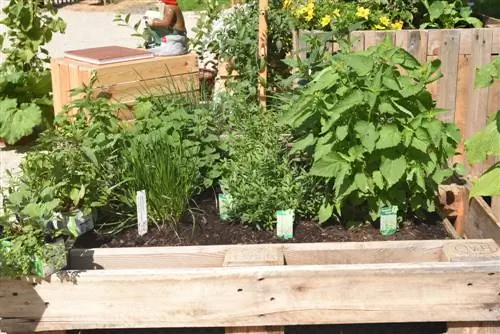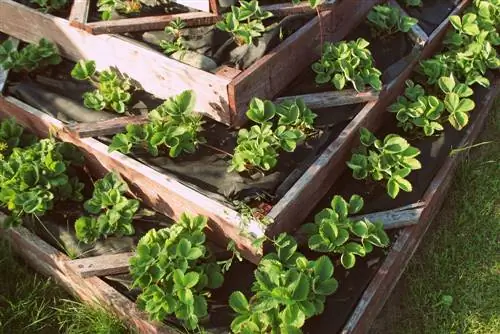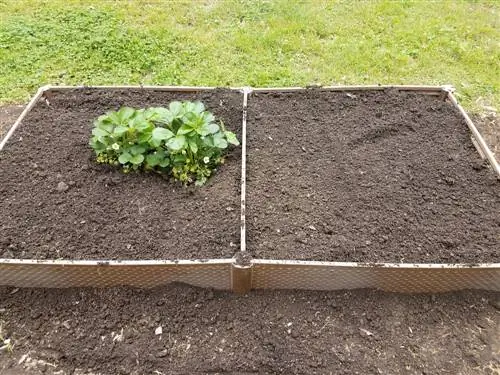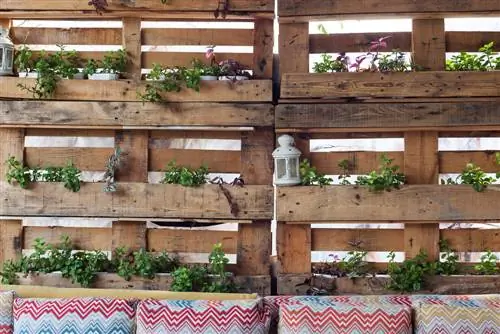- Author admin [email protected].
- Public 2023-12-16 16:46.
- Last modified 2025-06-01 06:02.
Doing it yourself is in - after all, it can also be a lot of fun and save money. Even with a wooden herb bed, it is advisable to get active yourself. We will show you the advantages and provide you with useful tips.
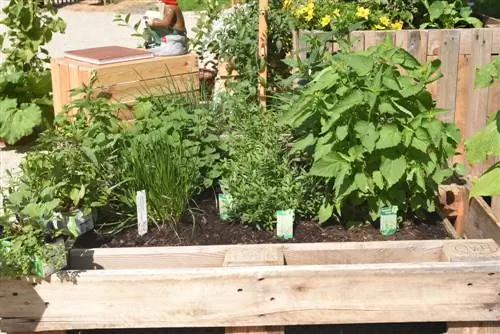
Why and how should you build a herb bed out of wood?
Building your own herb bed out of wood offers advantages such as mobility, segmentation of different herbs and more influence on the substrate. Boards with a maximum edge length of 1.20 m and a height of 40 cm are suitable for a ground-level box bed, while a raised bed can be made larger.
Build your own herb bed - the advantages
In order to have your own small spice and healing garden, simple outdoor cultivation does not always make sense. Especially if your garden doesn't have a suitable space for it or you only have a balcony. In this case, it is advisable to make your own box bed out of wood. But framing with subdivisions also makes sense in order to segment herbs with different requirements. A raised bed also has special plant-related and handling advantages.
So why you should build a box herb bed yourself:
- Mobility - freer choice of location
- Possible segmentation of different herbs
- more influence on the substrate and easier management of raised beds
The box bed in the open field
If you have a suitable outdoor location for your herb bed, you can still structure it well with a wooden structure. It separates the herb culture from the outside and can take the vegetative properties of the planned herbs into account with separate inner boxes. For example, varieties that spread and grow particularly well, such as lemon balm or peppermint, can be kept in check.
In addition, the individual box segments can be filled with different soil mixtures - so you can cultivate nutrient-requiring herbs such as parsley, lemon verbena or tarragon and varieties that prefer lean soil such as thyme, rosemary or marjoram in a small space.
Of course, you can also leave such a functional box bed as a low, free-standing structure and not sink it into the open ground. Then it is a little more conspicuous, but in case of doubt it is also mobile for location experiments or overwintering.
The herb raised bed
With the free-standing box bed, we are not far away from the raised bed - except that the raised bed is, as the name suggests, even higher and therefore offers further advantages.
On the one hand, this results in a pleasant working height - to provide even more comfort, you can attach side, circumferential bench surfaces to your wooden construction with cross supports or legs screwed to the bottom. This can be very convenient for caring for herb plants and harvesting, especially for older people.
On the other hand, you can put together a deeper substrate in a raised bed construction - in this respect, a raised herb bed is particularly suitable for varieties that require nutrients such as chives, parsley, basil or lovage. With a raised herb bed made of wood, you can also provide the plants with a relatively temperature-resistant and breathing soil climate.
Build it yourself - note the size
For a ground-level box bed, you should not estimate a width and length of more than 1.20 m. Otherwise access will be difficult. Boards about 40 cm high are suitable for the construction.
With a raised herb bed, you can of course go further with the edge length - as long as the depth still allows you to reach the herbs planted in the middle. The rule of thumb of a maximum of 1.20 m also applies here.

